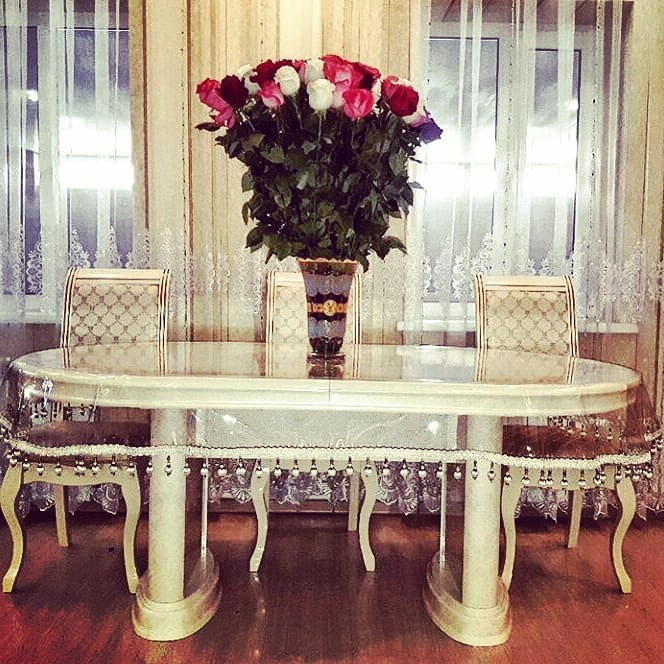In the old days, food was treated with great respect, because it was not bought in a store, like we do today, but was caught in the forest or grown in the field. That is why each meal was a special ritual, in the creation of which a special place was given to the tablecloth. Various materials were used to make it; it was actively used as a separate magical remedy in folklore (let’s take, for example, the well-known self-assembled tablecloth).
In the modern world, this piece of furniture is not used as often as we would like, but it does not lose its relevance. Today, a tablecloth is a product (textiles or synthetic materials are used to make it) that is used to cover the dining table.

@azhur_textile
The ancient Egyptians covered tables with a special cover made of cotton or linen. It was a durable canvas, decorated with various ornaments. In the ancient period, people treated the tablecloth with great respect; slaves and beggars were forbidden to use it.
Eastern peoples embroidered table linen with gold, which made it very expensive, and therefore only wealthy people used it.
Europeans, especially in the early Middle Ages, were not particularly careful. They poured sewage from the windows, rarely washed and did not use basic hygiene products. Of course, the tablecloth also remained a useless item for them for a long time.
In Ancient Rus', on the contrary, the table was covered with painted canvases that were sewn by hand. From time immemorial, our ancestors tried to embellish their life, so a tablecloth was a mandatory attribute of any hut, regardless of the social status and financial security of the family. Even the poorest peasants tried to find at least some way to cover the table.

@ivan-da-maria.org
It is interesting that for a long time (until the twentieth century) a tablecloth was a mandatory attribute of every bride in our country. If the family was considered wealthy, then table linen embroidered by the nuns was used as a dowry. It was expensive and incredibly luxurious, and the complex patterns on such canvases can be viewed endlessly. The common people and serfs also considered it their duty to prepare a dowry for their daughter. Only their tablecloths were simple and were often embroidered by the girls themselves.
Until the 19th century, the table was set exclusively with linen and cotton. Then plush tablecloths came into fashion, and in the middle of the twentieth century, when synthetic materials became generally available, oilcloth products appeared.

@dastarkhan_erkenur_skatert
It is believed that the tablecloth performs a number of very important functions:
Today, different materials are used to make this piece of furniture: natural, mixed and synthetic. Thus, products made from cotton and linen are still very popular, although it is difficult to call them particularly practical: natural linen shrinks after washing, quickly loses its brightness, and it is more difficult to remove stains from it. However, such a product looks luxurious, and therefore it is better to use it for formal lunches and dinners.
Synthetic products are practical. They last a long time and do not require special care. Silicone and oilcloth tablecloths look great, especially if we are talking about an everyday option.

@yutdoma_krd
However, mixed materials are most convenient. They last a long time and look great in appearance. Therefore, tablecloths made of such fabric are especially common.